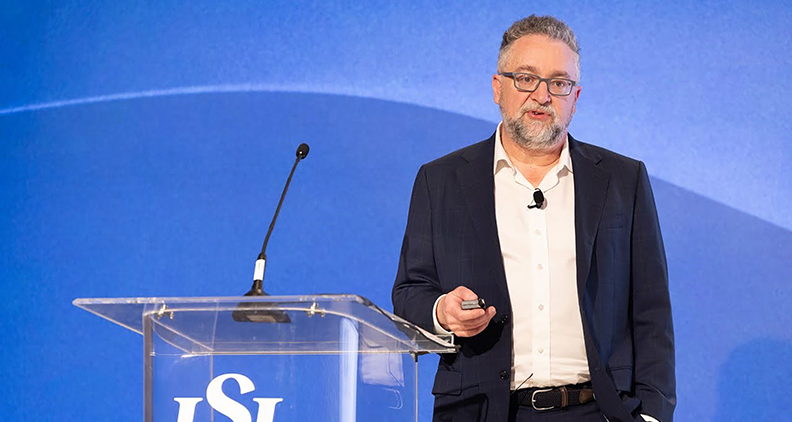
Editor’s note: This is part 1 of a four part series on orthopedic supplier solutions to today’s most pressing challenges. Check out part 2 for for supply chain management pearls, part 3 for advice on controlling manufacturing costs and part 4 for insights on ways to reduce lead times and the importance of transparent communication between OEMs and contract manufacturers.
The orthopedic supply chain has always been challenging to manage — and now it faces new complexities, from global disruptions to evolving trade policies. OEMs are also under increased pressure to develop the next big thing in patient care while minding the bottom line and getting products into surgeons’ hands as quickly as possible. It’s, well, a lot.
A company’s ability to adapt quickly to changing circumstances and its commitment to continuous improvement will be key to evolving and thriving in an increasingly unpredictable global market.
Orthopedic suppliers are perfectly positioned to help OEMs navigate these obstacles with effective strategies, expert collaboration and industry know-how. They’re helping OEMs manage an evolving environment and positioning them for long-term success in an unpredictable market. They mitigate a supply chain’s risk and enhance its resilience. They do whatever it takes to secure raw materials. They optimize manufacturing processes and constantly strive to reduce production costs. They do, well, a lot.
We spoke to several such suppliers who shared their thoughts on the current manufacturing landscape, how they see the market evolving in the months ahead and the keys to navigating the uncertainty surrounding the constantly evolving U.S. tariff policy.
Changing Market Dynamics
As 2025 began, orthopedic suppliers continued to navigate the ripple effects of OEMs that were still working through backlogged inventory left over from the COVID-19 pandemic. Orders were down. Business was slow. This reality posed significant challenges for many companies that tried to set accurate forecasts, manage budgets and plan for future growth.
Uncertainty about current and future demand across the industry has created challenges for OEMs and suppliers, forcing companies to rethink how they approach supply chain management, product development and overall strategy.
According to John Ruggieri, Senior Vice President of Business Development at ARCH Medical Solutions, the company’s approach to future planning and forecasting has always been rooted in understanding the needs of their OEM partners.
“At the end of Q4, we reach out to our customers to get a sense of their product development and manufacturing needs for the upcoming year,” he said. “This helps us align our staffing, resources and capital spending to meet their demands.”
Ruggieri noted that the feedback ARCH Medical received at the end of 2024 was unlike previous years. “There was a lot more uncertainty among the OEMs,” he said. “Some were talking about reducing inventory further, while others were planning to ramp up production. It left us guessing.”
That type of uncertainty surrounding expected case volumes and production requirements creates significant challenges for suppliers, which rely heavily on customer forecasting to make informed decisions about staffing, capital investment and operations.
“When you’re working with customers that don’t know what to expect from the market, it’s difficult to make informed decisions,” Ruggieri said.
Despite this uncertainty, ARCH Medical and other contract manufacturers said they noticed a positive shift in the industry toward the end of last year and into Q1 this year. Proposal activity, RFQs and general engagement levels began to ramp up.
OEMs were starting to introduce new products and extensions of existing product lines. Business from legacy product lines is essential for steady cash flow, but new product development serves as a barometer for future growth. The increase in new product work indicated to ARCH Medical that manufacturing might be on the cusp of a rebound.
“We’re always looking to develop and innovate,” Ruggieri said. “When customers begin developing new products, it’s a sign that the market is starting to move again. That’s a positive indicator.”
Looking ahead, ARCH Medical is hopeful that this year’s Q2 will serve as the inflection point, marking the start of a more robust market recovery of new product introductions.
While the broader economic conditions — such as high interest rates, tariffs and material costs — still present headwinds, other suppliers also feel optimistic that manufacturing is beginning to turn the corner.
Dave Anderson, Business Development Leader at Mach Medical, has seen some indications that things might be picking up. During Mach Medical’s best historical quarter, the company received 19 project proposals. During the first quarter of this year, the company was on track to receive 30.
“In the past, the proposals were mostly for small, incremental projects with the occasional big one mixed in,” Anderson said. “Now, we’re seeing a shift. The majority are substantial, high-impact projects.”
Anderson acknowledged that it’s still too early to draw meaningful conclusions from the promising numbers. “It was just one quarter, so it’s only a single data point,” he said. “But it’s a meaningful one that has made us much more optimistic.”

The U.S. tariff policies are causing confusion among supply chain professionals.
Tariffs and Global Sourcing
One of the most frequent questions Lisa Hiller, Strategic Account Manager at Orchid Orthopedic Solutions, receives from OEM customers revolves around the availability of the raw materials needed to produce orthopedic implants. The ongoing uncertainty surrounding supply routes and material availability due to the U.S. tariff policy has become a focal point of concern.
“We’re receiving a lot of inquiries due to the uncertainty surrounding supply routes between the Congo and China,” Hiller said. “It’s a hot topic right now, and we’re actively addressing it with our customers.”
These disruptions are not just about current material shortages, but also about the uncertainty regarding future access. “At the moment, cobalt chrome is causing the most concern and having the largest impact,” Hiller said. “Projections indicate a four-month disruption in shipments, but no one knows for certain whether the situation will stabilize or extend beyond that.”
The uncertainty surrounding the availability of raw materials poses a significant challenge for suppliers that must closely monitor inventory levels while managing production timelines, cost structures and customer expectations.
Despite these challenges, Orchid has strategically established a solid runway for material availability. “We’ve been proactive in securing contracts that help us maintain a steady supply and mitigate supply risks,” Hiller said. “This gives us more security, especially when unexpected disruptions arise.”
The company’s ability to lock in material pricing and secure inventory in advance has helped them manage the current climate, but the long-term outlook remains uncertain.
“We often hear questions about the location of our manufacturing — where products are made and how they are transported,” Hiller said. “For example, what happens when products manufactured in our European facilities are shipped back to the U.S. for customers, or vice versa?”
President Trump’s on-again, off-again tariff policy has heightened these logistical challenges. The resulting confusion and uncertainty led some OEMs to reconsider the ways they manage supply chains and caused them to be more cautious about where they source their materials and how they distribute products globally.
“We’re seeing customers reevaluate whether it makes more sense to receive products at their U.S. facilities for final processing rather than having them shipped from Europe,” Hiller said.
Orchid has worked with its customers to adapt to these shifts and ensure that manufacturing processes are aligned with the changing market dynamics. The company is focused on dual sourcing on multiple continents to ensure that it can support regional supplies.
This approach allows Orchid to offer greater flexibility by producing products in the U.S. and Europe, depending on where the final device will be distributed. It also helps mitigate the risks posed by changing tariffs or other geopolitical factors that could disrupt supply chains.
Orchid’s focus on adaptability and regional manufacturing positions the company well to navigate today’s challenges and uncertainties.
“We see the current landscape as a big opportunity,” Hiller said. “We can build a more resilient supply chain that will serve us and our customers well into the future.”
For a time during the pandemic, material availability was a major constraint that drove up manufacturing costs. The supply chain stabilized for a period; however, tariffs and other geopolitical factors threaten to increase material costs once again.
“That’s always a concern for us,” said Chad Ryshkus, Vice President of Marketing and Business Development at ARCH Medical. “While materials are generally a smaller portion of the overall cost structure for orthopedic instruments, they have a much more significant impact on implants.”
Because of these challenges, ARCH Medical has found ways to mitigate the impact of material price increases. “We work closely with our suppliers and customers to maintain transparency. That way, if material costs go up, we can adjust pricing,” Ryshkus said.
Many of ARCH Medical’s contracts include provisions that allow for price adjustments in the event of significant cost increases, which has helped them manage these challenges without jeopardizing their relationships with customers.
ARCH Medical has also adjusted to manage cost pressures by securing raw materials in bulk. Purchasing in bulk limits the risks of market volatility and ensures access to needed materials. However, one of the more complex challenges that most contract manufacturers face involves sourcing materials from regions that are heavily impacted by U.S. tariffs.
“We’ve made a conscious decision not to source materials from China because of the tariffs, and many of our customers prohibit the use of Chinese materials,” ARCH Medical’s Ruggieri said. “Instead, we focus on sourcing domestically wherever possible.”
However, certain materials such as aluminum are difficult to obtain from U.S. suppliers. The material is one of the biggest cost drivers in ARCH Medical’s products. With major sources of aluminum coming from Canada and Europe, the company must keep a close eye on pricing trends, particularly as tariffs continue to impact these regions.
In response to these challenges, the company has revamped its approach to sourcing. In the past, each of its manufacturing sites would manage their own material needs. Now, the company has centralized its sourcing strategy at the corporate level to leverage better buying power and negotiate stronger deals.
By consolidating demand across their 23 factories, ARCH Medical has been able to take advantage of economies of scale, which has proven to be a valuable strategy as material costs fluctuate.
Although Millstone Medical Outsourcing does not manufacture products directly, it maintains strong relationships with OEMs that are deeply affected by tariff changes. Peter Huie, Millstone’s Vice President of Supply Chain Operations, acknowledged that tariffs will likely have a more significant impact in the months ahead, particularly as OEMs adjust to the new cost structures.
“The impact of tariffs will become evident as we move further into 2025 and will likely influence lead times, costs and supplier relationships,” Huie said.
In response to the tariffs, Millstone focuses on alleviating downstream pressures by optimizing post-manufacturing operations. By improving sterile packaging and kitting workflows, Millstone helps OEMs avoid overproduction and reduce the urgency of responding to upstream delays. This allows OEMs to manage costs more effectively while maintaining flexibility in their supply chains, even in the face of uncertain trade policies.
“By streamlining last-mile logistics and inventory distribution, we offer our partners the flexibility they need, even when global trade policies present challenges,” Huie said.
Adam Paltzer, Vice President of Operations at Able Medical Devices, said tariffs have become a significant concern for orthopedic manufacturers, particularly on materials like titanium. Paltzer and his team anticipated the potential impact of tariff changes early on and took proactive steps to mitigate their effects.
“When we first caught wind of the tariff changes, we immediately began forecasting and ordered as much material as possible — or at least reserved it,” Paltzer said.
This foresight allowed Able to manage cash flow and inventory levels, ensuring that the company would not be caught off guard by price increases or shortages. It’s part of a larger overall strategy to remain agile and ready to respond to dynamic forces that define today’s orthopedic market: The only certainty is uncertainty.
DC
Dan Cook is a Senior Editor at ORTHOWORLD. He develops content focused on important industry trends, top thought leaders and innovative technologies.




